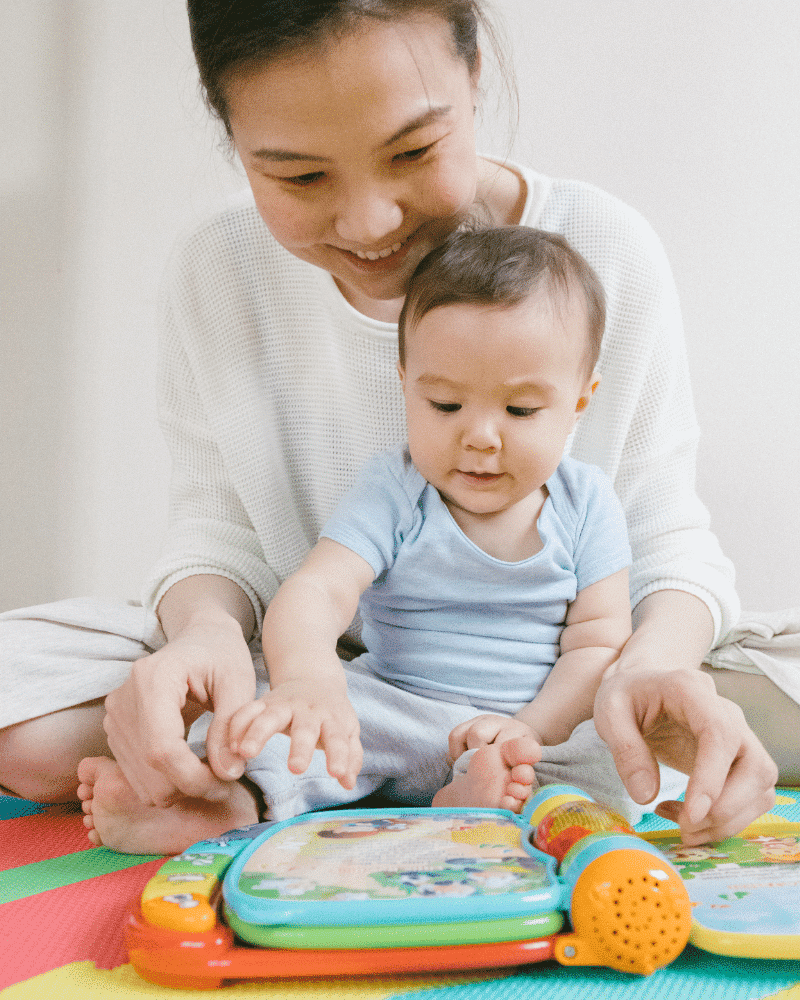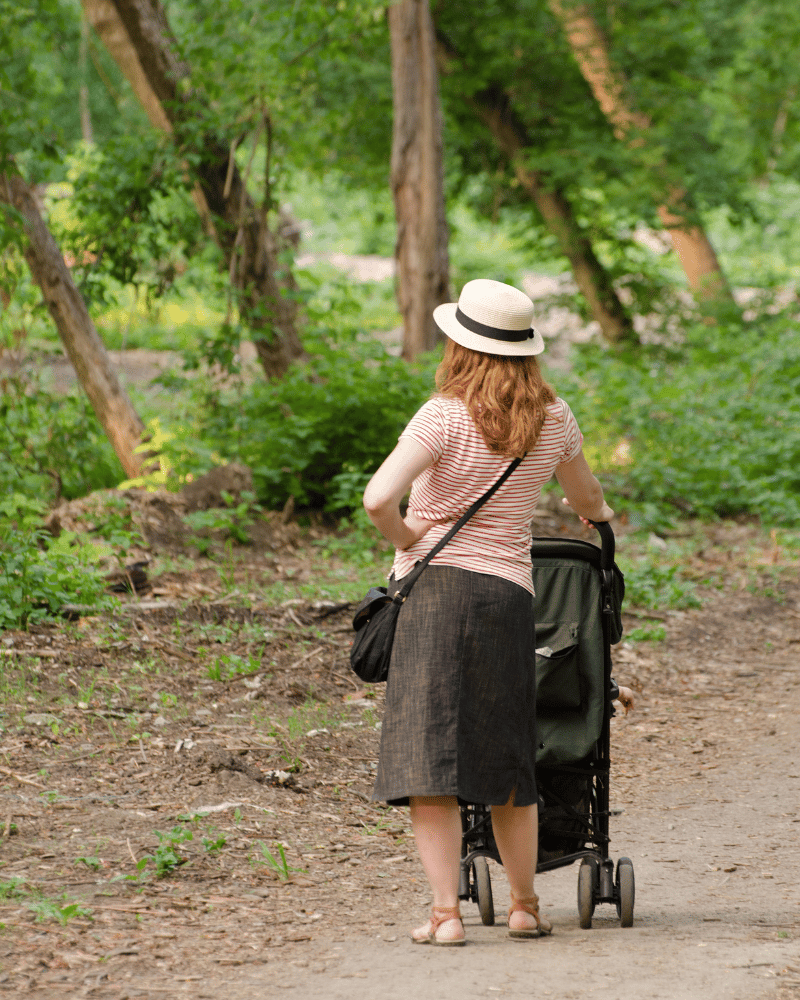5 month old wake window
We’re sure you’ve got your hands full now with your 5 month old baby! We hope you’re getting a little more sleep by now! In this blog, we’re telling you all about the 5 month old wake window.
This article includes:
- How long do 5 month old babies sleep?
- 5 month old sleep schedule
- 5 month old wake window
- Can you sleep train a 5 month old baby?
- How do you know a 5 month old is tired?
- 5 month old baby struggling with staying asleep?
- 5 month old bedtime routine: Sleep tips
- Sleep regressions
- Adjusting the 5 month old wake window
At 5 months old, your baby is developing at what feels like a swift pace. They’re probably getting more confident sitting up and may have started rolling around! We’re sure you’re having a ball and enjoying learning about parenthood.
You’ve probably noticed lots of changes since the newborn wake windows. At 5 months old, you’ll find that you can spend quality time with your baby during their wake windows rather than it all being about feeding and changing.
If your baby is 4 months old, you may be interested in looking at 4 month old wake windows instead. Slightly older? We also have a blog on 7 month old wake windows.
How long do 5 month old babies sleep?
As your baby grows, you’ll notice a quick change in their sleeping habits. You’ll find yourself working on the next sleep schedule as soon as you’ve perfected the current one.
At 5 months old, your baby needs between 12 and 15 hours of sleep daily. Try not to worry if your baby has slightly more or less than this; every baby is different. Instead, contact a certified pediatric sleep consultant if you do feel worried about your 5 month old baby’s sleep schedule.
Between the ages of 4 and 6 months old, your baby could start being able to sleep through the night. This is a great developmental milestone for your baby to reach.
How many naps does a 5 month old baby need?
A sample nap schedule for a 5 month old baby would include 3 naps. For some 5 month old babies, this can be one too many. For others, parents may need to allow for longer naps or shorter naps to meet their needs.

5 month old sleep schedule (three nap schedule)
Knowing when it’s time for a nap can still be challenging at this age. The best thing you can do is look for sleepy cues in your baby. Here’s a sample sleep schedule you may choose to follow.
- 7am: Wake up
- 9am: Nap
- 11am: Awake time
- 12:30pm: Nap time
- 2:30pm: Awake
- 4:30pm: Nap
- 5pm: Awake
- 7pm – Go to bed
During the last 5 month old wake window, it’s a good idea to incorporate a bedtime routine. We’ll give you some of our top tips for a bedtime routine later in the blog.
If your baby is not sleeping through the night yet, that is okay! By 6 months old, most babies are able to sleep through the night. If your baby is not sleeping through the night by 8 months old, then you should consider speaking to a sleep consultant. If you would liek to read more about 8 month old wake windows, you can read our blog.
You’ll notice that the nap times are different lengths. The first wake window can be shorter for some babies as they remain tired from their nighttime sleep. It’s a good idea to leave a longer gap between the last nap of the day and bedtime.
How much daytime sleep your baby needs may vary. They’ll have around three naps within their sleep schedules at this stage. You’ll notice that you can start introducing short naps or ‘cat naps’ at the end of the day; 30 minutes is a good target.
5 month old wake window
Your baby’s 5 month old wake windows are getting longer and they’re learning fast, so what can you do together during their wake windows? 5 months is a fun age to spend time with your little one.

Play with sensory toys
Young babies can learn so much through play. Toys with sounds can help your baby develop their sensory skills. We’re talking instruments, crinkly toys and even musical books – it all makes a difference.
You might notice that your baby becomes more vocal as they age. Maybe it feels like you’re having a conversation with them, or perhaps they love to gurgle. You’d be surprised how much they’re trying to say based on what they’ve heard.
Teaching motor skills
At 5 months old, your baby might have started passing objects from one hand to another. This is your baby developing motor skills. A fun way that you can encourage this development is through some ball games.
You could try rolling the ball between you and your baby. You’ll notice them starting to pick up the ball, which will help them to refine their skills.
Feeding your baby
Don’t forget that feeding and changing your little one is included in the wake windows. At 5 months old, it’s nearly time to start weaning your baby – how exciting!
Head out for a walk
Heading out for a walk will not only bring a new environment for your baby, but it’ll also give you some fresh air. While you’re on your walk, you should take some time to point out nature. Babies can learn a lot from repetition, so you’ll definitely be teaching them through naming objects.
Many refer to the 5 month wake window as an eat play sleep routine and they’re pretty much right! Find out more about wake windows by age.

Can you sleep train a 5 month old baby?
At 5 months old, you can start thinking about sleep training your baby. This may be particularly useful for babies struggling with naps and nighttime sleep and can help to build healthy sleep habits.
There are lots of methods of baby sleep training that you could try. The way that works will depend on your’s and your baby’s needs.
Getting the right amount of sleep can be tricky as a new parent, but the good news is that it does get easier. Engaging in a sleep training routine can help you to sleep too. We know that if your baby is struggling to sleep, then it’s likely that you are too.
How do you know a 5 month old is tired?
A telltale sign that your baby is ready for a nap is that they become pretty cranky. They may start crying and be tough to settle. They may also seem disinterested in playing or engaging in other activities.
Most babies can also become quite needy when they need sleep. This means they may start crying more and require your attention.
Paying attention to this can help you to identify your baby’s 5 month old wake windows more clearly.
5 month old baby struggling with staying asleep?
Checking on them without being seen is a good idea if your baby wakes up crying during a nap. Checking on them quietly means you can have peace of mind that they’re OK without teaching them that you’ll always come running.
Surprisingly, an overtired baby may take longer to fall asleep. This is particularly common in day sleep. Try not to sit with them so they can learn to fall asleep independently.
As your baby grows, you’ll learn plenty of tricks to make sleep easier for both of you.

5 month old bedtime routine: Sleep tips
Ahhh, another day full of love and learning with your baby! Now it’s time to help them settle into a comfortable sleep for the night.
You could start the bedtime routine by bathing your baby, which will help to soothe and comfort them. After bathing, you can get them a fresh babygrow and settle down with a story or maybe a lullaby. Finally, you can have a cuddle and give them their last feed before settling them down for sleep.
Then you can start thinking about all the fun things you can do together tomorrow!
Sleep regressions
At this stage, the two main sleep regressions occur at 4 and 6 months old. Sleep regressions are due to your baby developing rather than not wanting to sleep. Sometimes 5 month old babies need their sleep adjusting. Check out our signs and tips on the 6 month sleep regression.
Adjusting the 5 month old wake window
It’s a good idea to be flexible with the sleep schedule. At 5 months old some babies might be ready to sleep less. It’ll soon be time to drop the naps to just two per day.
As we’ve advised in the past with other wake windows, getting your baby to stay awake an extra 15 minutes can help. Before you make any other changes, wait and see how this affects your little one. You don’t want to risk taking off too much sleep time and having a cranky baby.
Waiting for a few days should give you enough time to notice how your baby reacts to changing sleep periods. Then, depending on the effects, stay as you are or add the sleep time back and make the change at a later date.
Not worrying too much about sticking to a tight sleep schedule with your baby is important. They are so young, and there are lots of changes happening. Spend time getting to know your baby and teaching them impressive skills. Be confident in your decisions, and remember that you know your baby best!
Hey there, I’m Abigail!
In 2022, I graduated with a First Class Degree in Marketing and since then, I have been working as a blogger and Marketing Assistant. Before heading to university, I also achieved a BTEC in Children’s Play, Learning and Development.
I have been blogging for over four years and have covered many topics during this time. My focus has been on pregnancy, babies, sleep and baby name ideas.
I am passionate about learning new things and helping others. I hope that you find my blogs useful and informative. See you in the next article!


















